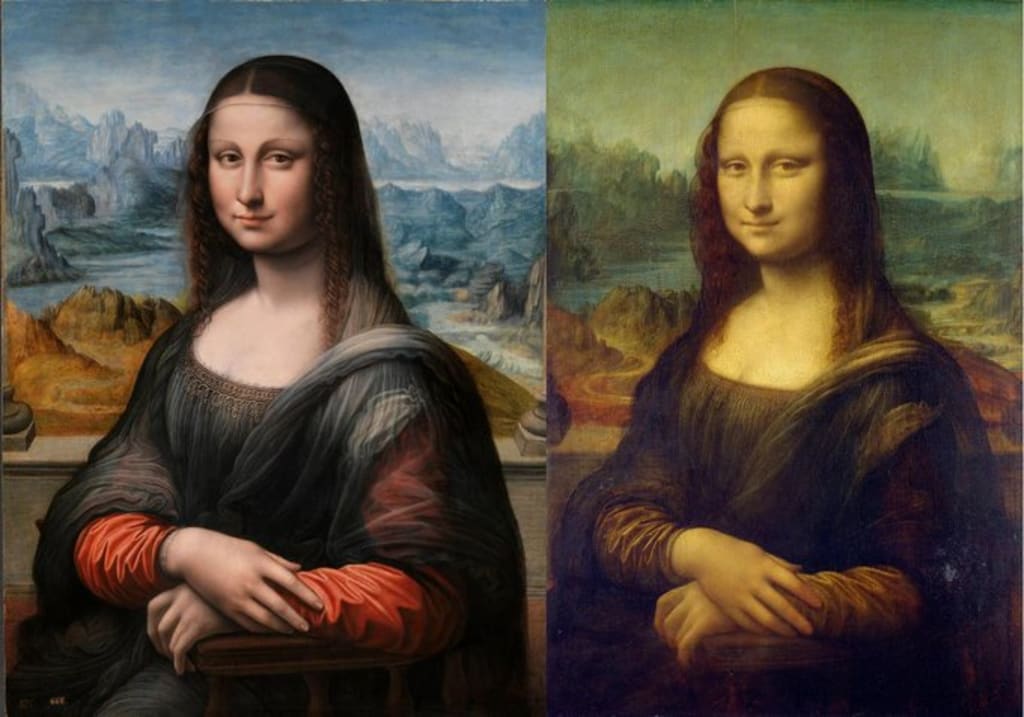
The discovery and restoration of La Gioconda del Prado, an impeccably preserved replica of Leonardo da Vinci's Mona Lisa, painted by one of his talented students, has sparked considerable excitement and scholarly interest in the art world. Housed in the esteemed Prado Museum in Madrid, Spain, this copy offers a unique opportunity to revisit one of history's most famous paintings and unravel its hidden mysteries.
La Gioconda del Prado is believed to have been crafted by an anonymous apprentice of da Vinci during the early 16th century. Its creation was likely part of the educational process within da Vinci's workshop, where students emulated the techniques and style of their revered master. The painting's journey from Italy to Spain and eventual placement in the Prado Museum adds a fascinating chapter to its storied history.
In 2012, La Gioconda del Prado underwent a meticulous restoration, revealing astonishing details that have since faded from the original Mona Lisa. This restoration project was not only a technical endeavor but also a profound artistic revelation, shedding new light on the craftsmanship and vision of da Vinci's contemporaries. By placing the two paintings side by side, art historians and conservators could observe nuanced differences and rediscover elements previously obscured by time.
Examining La Gioconda del Prado alongside the Mona Lisa offers a fascinating study in artistic replication and interpretation. While the compositions are strikingly similar, attentive observers will notice subtle divergences in color palette, brushwork, and detailing. These variances provide invaluable insights into the creative process of da Vinci's apprentices and their approach to mimicking his unparalleled style.
The restoration process itself was a delicate operation requiring expert skill and cutting-edge technology. Conservators employed advanced imaging techniques, such as infrared reflectography and multispectral analysis, to unveil the hidden intricacies of La Gioconda del Prado. Through this scientific exploration, previously imperceptible elements—such as underdrawings, subtle brushstrokes, and pigment choices—were brought to the forefront, enriching our understanding of the painting's historical context.
One of the most striking revelations from the restoration was the enhanced clarity of certain features in La Gioconda del Prado compared to the Mona Lisa. The landscape background, for instance, appears more vivid and detailed in the replica, showcasing a lush, atmospheric scene that complements the enigmatic figure in the foreground. Likewise, the intricate folds of clothing and subtle variations in facial expression are rendered with a finesse that underscores the skill of da Vinci's pupil.
Beyond its technical merits, La Gioconda del Prado invites contemplation on the nature of artistic imitation and innovation during the Renaissance. For da Vinci's students, copying the Mona Lisa was not merely an exercise in replication but a means of honing their craft and understanding the complexities of form and expression. Each stroke of the brush in La Gioconda del Prado speaks to a rich tradition of artistic apprenticeship and mentorship—a tradition that continues to influence art education today.
Moreover, the significance of La Gioconda del Prado extends beyond its role as a copy. It represents a tangible link to da Vinci's legacy, preserving a moment in history when artistic knowledge was transmitted through close mentorship and hands-on practice. The painting's presence in the Prado Museum underscores the enduring impact of Renaissance art on subsequent generations of artists and scholars.
For contemporary audiences, the restoration of La Gioconda del Prado offers a lens through which to appreciate the enduring allure of the Mona Lisa. The replica's meticulous craftsmanship and newfound details invite viewers to engage with da Vinci's masterpiece in a fresh and intimate manner. Whether visiting the Prado Museum in person or exploring digital reproductions online, individuals can immerse themselves in the artistry and ingenuity of Renaissance painting.
La Gioconda del Prado stands as a testament to the ingenuity and skill of Leonardo da Vinci's students. Its restoration in 2012 was a milestone in art conservation, illuminating previously obscured facets of a timeless masterpiece. By examining this remarkable replica alongside the original Mona Lisa, we gain new perspectives on the creative process and legacy of one of history's greatest artists. As La Gioconda del Prado continues to captivate audiences around the world, it reminds us of the enduring power of art to inspire, provoke, and transcend generations.






Comments
There are no comments for this story
Be the first to respond and start the conversation.